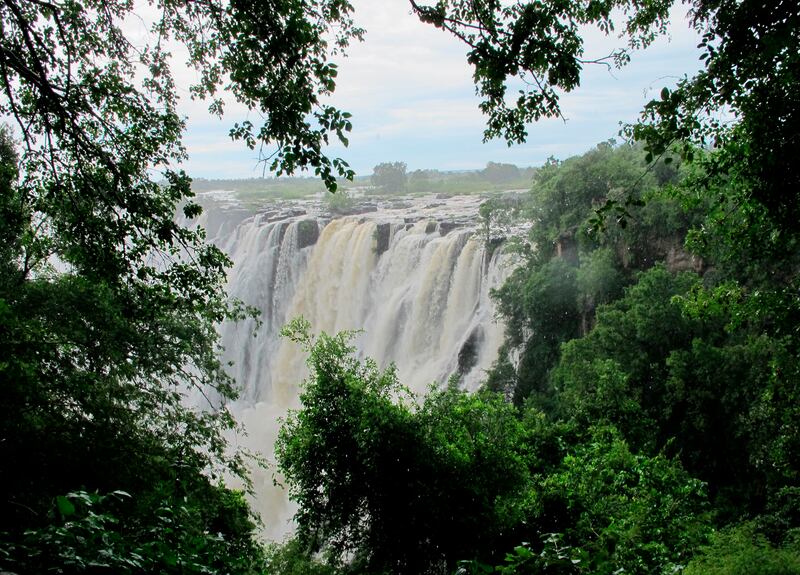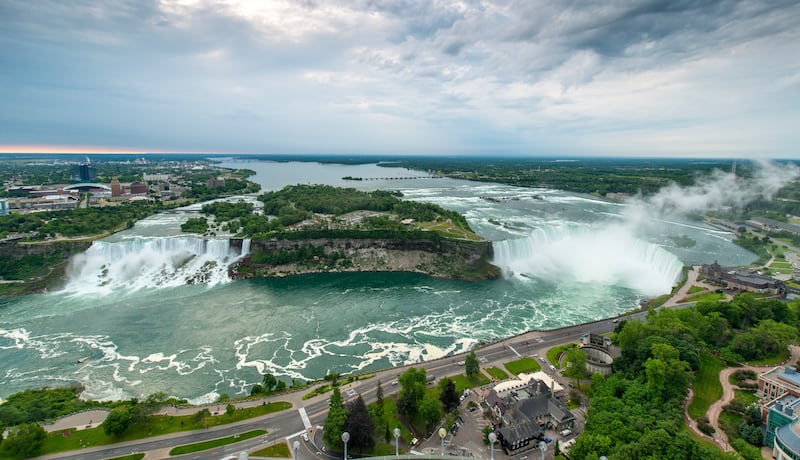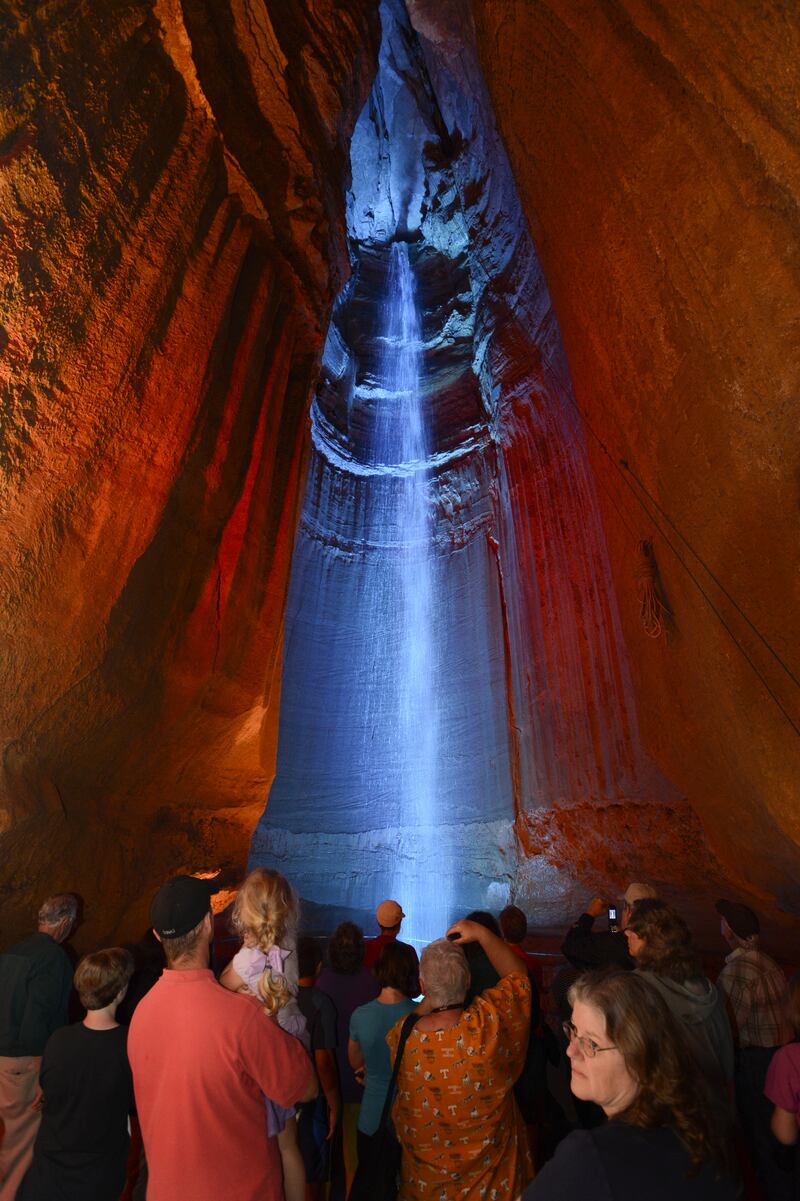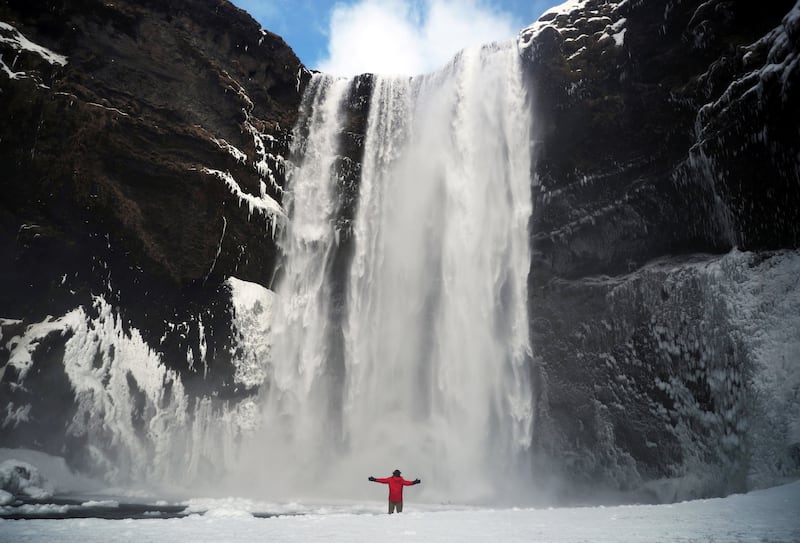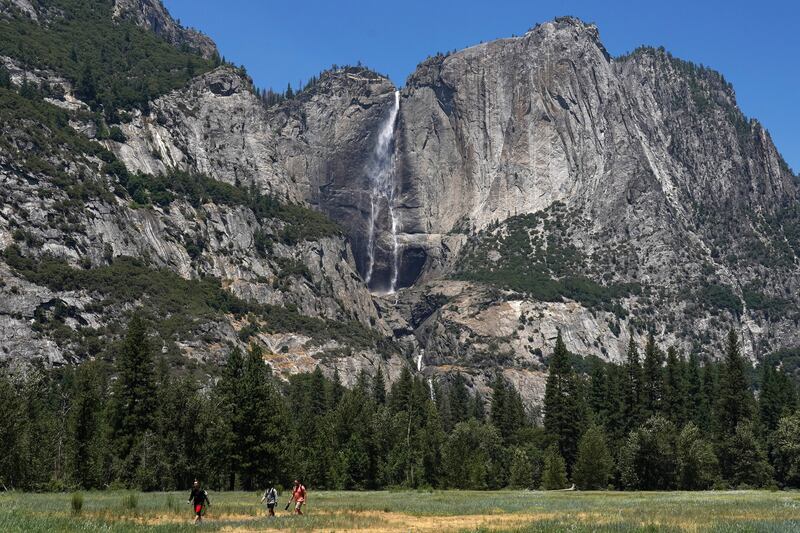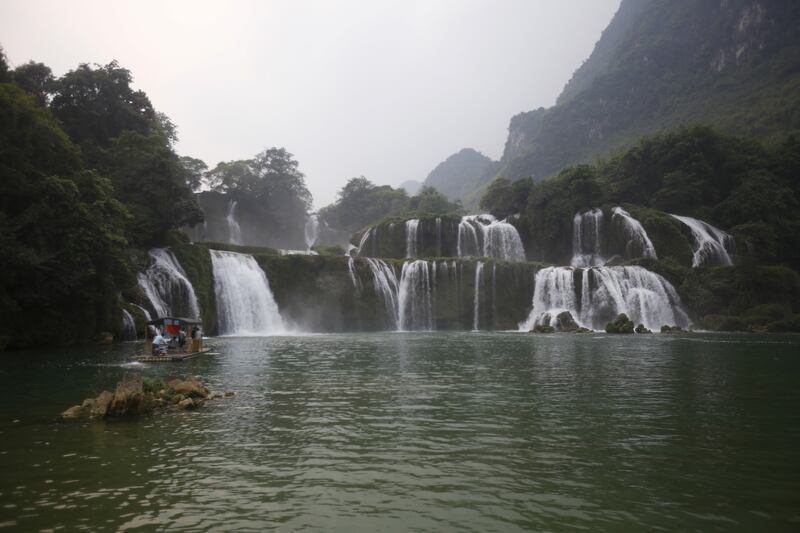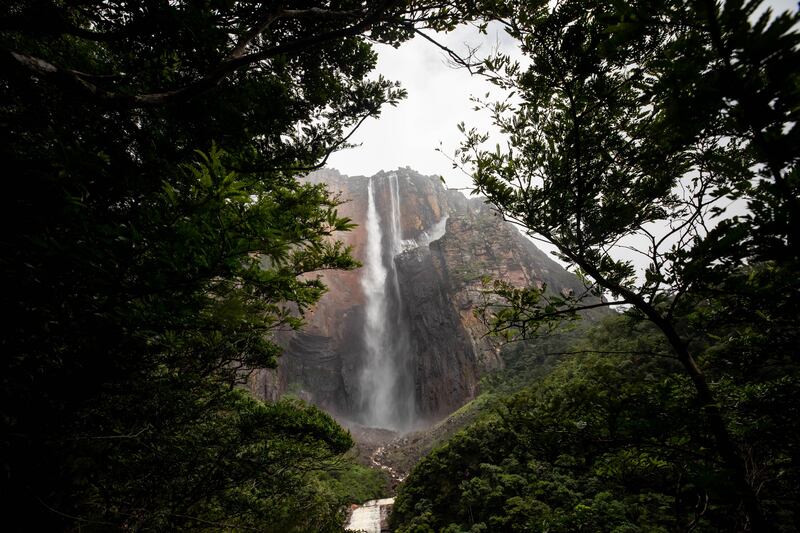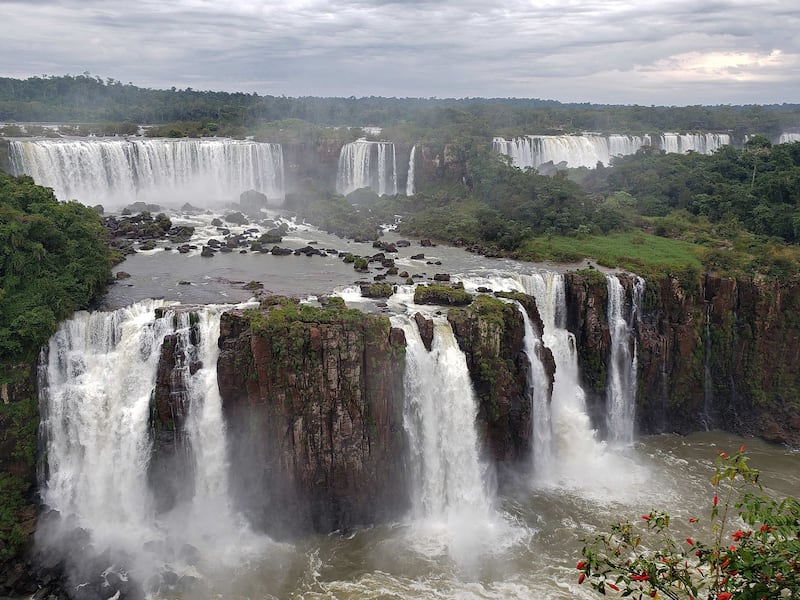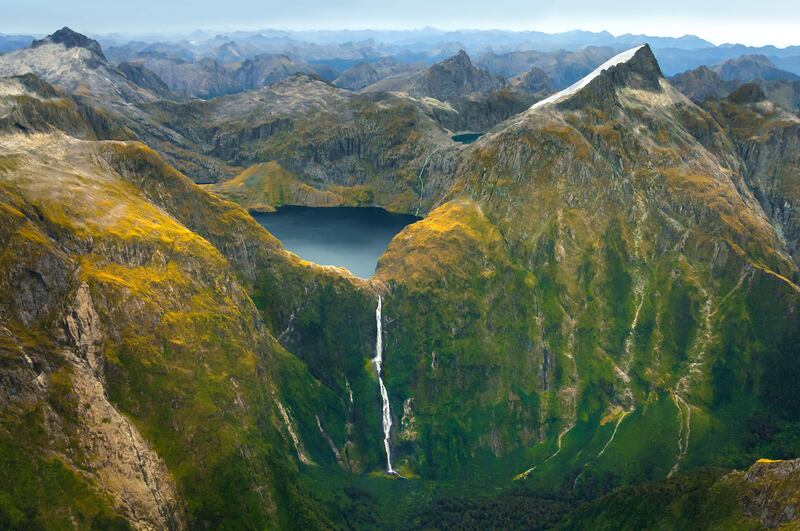Whether hidden underground, as with the Ruby Falls in Tennessee, or acting as a dramatic border between countries, such as the Victoria, Niagara, Iguazu or Ban Gioc Falls, waterfalls are a sight to behold, and a humbling reminder of the immense, unstoppable power of water. Here are 10 of the best.
Victoria Falls, Zambia / Zimbabwe
Forming the border between Zambia and Zimbabwe, Victoria Falls was dubbed Mosi-oa-Tunya, or "the smoke that thunders”, by the Kololo tribe, which inhabited the area surrounding this natural wonder in the 1800s. Almost two kilometres wide, with up to 500 million litres of water descending every minute, it is the largest curtain of falling water in the world, emitting columns of spray that can be seen up to 20 kilometres away as it drops into a gorge more than 100 metres below. Running parallel to the falls and adding to their jaw-dropping beauty is another sheer wall of basalt, which rises to the same height and is covered in verdant rainforest.
Angel Falls, Venezuela

The majestic Angel Falls was named after James Angel, an American pilot, who became the first aviator to fly over it in 1933. His story of a “mile-high waterfall” quickly spread, but the natural phenomenon was not officially measured until 1949. It has since garnered two Guinness World Records, establishing it as the world’s highest waterfall. It is 979 metres tall, with a single uninterrupted drop of 807 metres and a further 172 metres of steep cascades and smaller drops. It is found in the Canaima National Park, in south-eastern Venezuela's Bolivar state, and has earned Unesco World Heritage status.
Niagara Falls, Canada
Perhaps the most famous of the world’s big waterfalls, Niagara spans the border between Ontario, Canada and New York in the US. It consists of three separate sections, Horseshoe Falls, which is the largest, American Falls and Bridal Veil Falls. As well as being a popular tourist attraction on both sides of the border, the rapids are an important source of hydroelectric power. Contrary to popular belief, Niagara does not even count among the top 50 tallest waterfalls in the world, but it is remarkable for its combined height, 670 metres, and the volume of water, 168 million litres, going over every minute.
Ruby Falls, Tennessee, US

You’ll have to head into the heart of Tennessee’s Lookout Mountain to see Ruby Falls, the tallest and deepest underground falls currently accessible to the public in the US. Visitors descend 80 metres in a glass lift before following a cavern trail to the thundering cascade, which descends 45 metres down a vertical shaft. The watery attraction was found by accident in 1928, when a cave explorer, Leo Lambert, took an unexpected journey into the mountain. He named his discovery after his wife.
Sutherland Falls, New Zealand
Sutherland Falls consists of a series of three cataracts on Arthur River in New Zealand’s South Island. Located within the Fiordland National Park, the falls are fed by water from the snow-fed Lake Quill. With a total drop of 580 metres, it makes a cameo in Peter Jackson’s Hobbit trilogy.
Skogafoss, Iceland
Legend has it that a Viking named Thrasi hid his plundered gold under Iceland’s Skogafoss falls, but it has yet to be discovered. A two-hour drive from Reykjavik, the falls are worth visiting even if there is no bounty to be found. Standing about 60 metres tall and fed by the Eyjafjallajokull and Myrdalsjokull glaciers, Skogafos produces such a dense amount of spray that single or double rainbows are visible around the attraction on most sunny days. Visitors who brave the 370 steps leading to the top of the fall will be greeted by stunning views of Iceland’s southern coastline.
Yosemite Falls, US

Yosemite Falls is one of the most popular attractions in California’s famed Yosemite National Park. The snow-fed waterfalls were formed by creeks descending into the Yosemite Valley and consist of three drops. The Upper Yosemite Fall descends 436 metres, while the Lower Yosemite Fall drops 98 metres, with a series of smaller cascades in between. The combined drop is 730 metres, creating one of the highest waterfalls in the world. It generally flows from November to July, peaking in May.
Ban Gioc, China / Vietnam
Straddling China and Vietnam, Ban Gioc is the collective name for a series of waterfalls on the Quay Son river. Part of the Unesco-recognised Non Nuoc Cao Bang geopark, water flows down a series of tiered cliffs in a striking semicircular formation, flanked by verdant forest. The waterfalls are at their most impressive during Vietnam’s wet season, between June and September.
Iguazu Falls, Argentina / Brazil

“My poor Niagara” is what former US first lady Eleanor Roosevelt is reported to have said when first faced with the majesty of the Iguazu Falls. It is true that, at 82 metres high and 2,700 metres wide, with 275 drops, Iguazu does dwarf its North American counterpart. The falls are shared by Argentina and Brazil and were granted Unesco World Heritage status in 1984.
Kaieteur Falls, Guyana
The Kaieteur Falls make an awe-inspiring 226-metre sheer drop off the edge of a sandstone plateau before falling through a 25-metre gorge. Located in west-central Guyana on the Potaro River, they are the central feature of the Kaieteur National Park, and among the world’s tallest and most powerful waterfalls.
